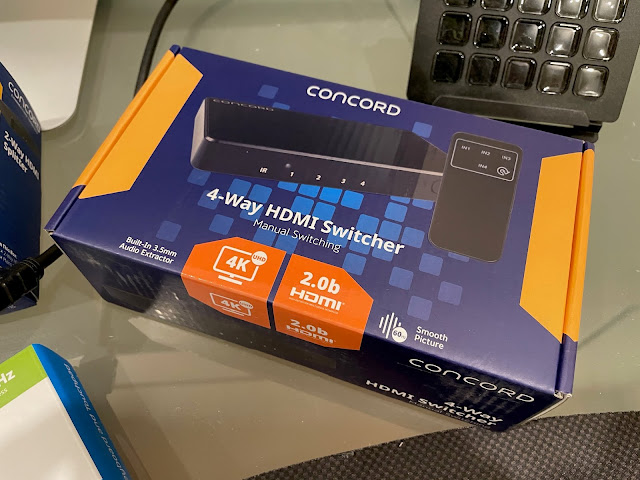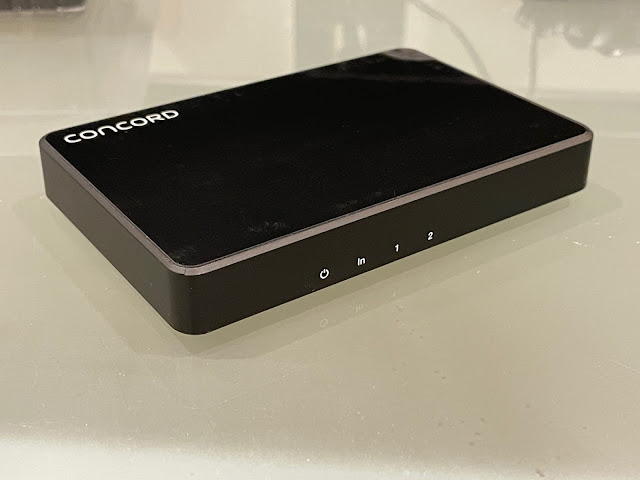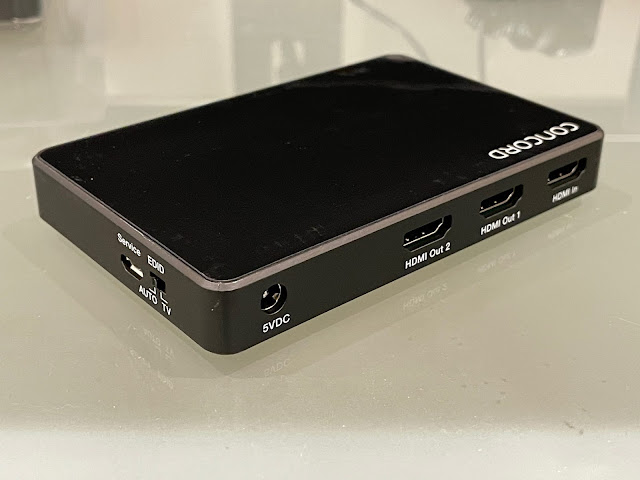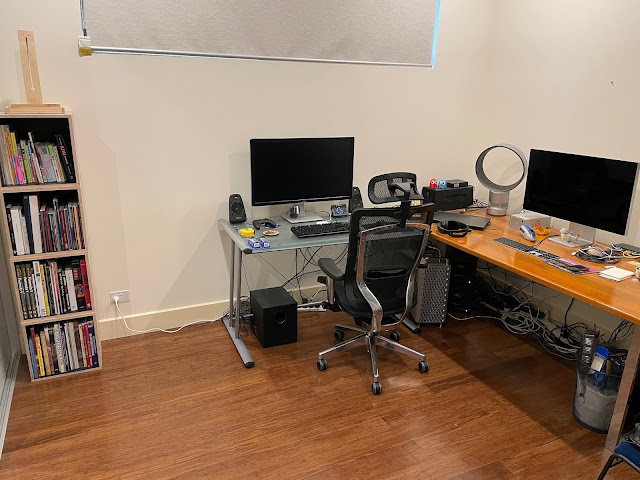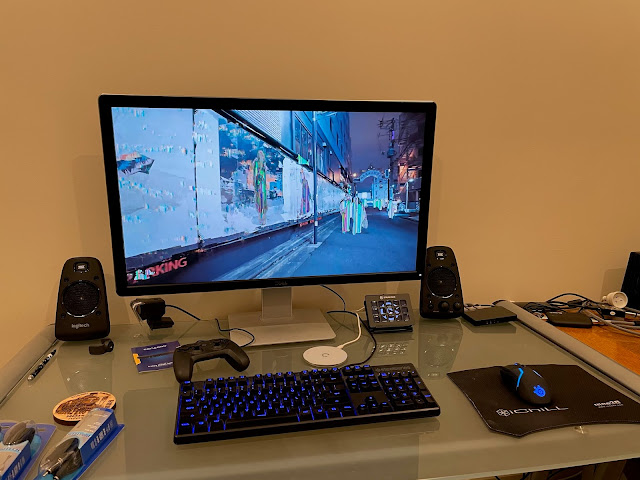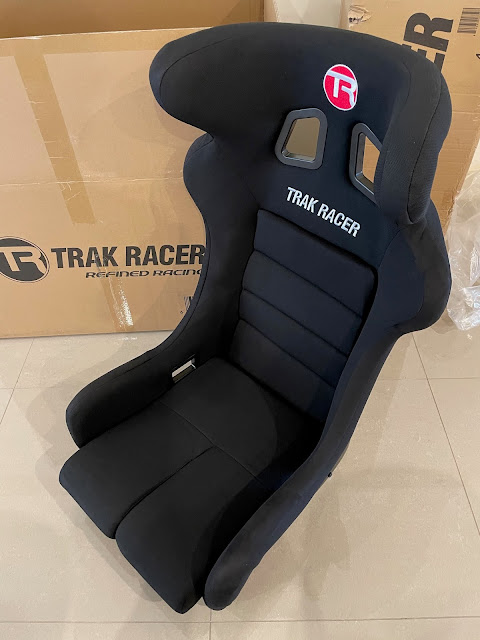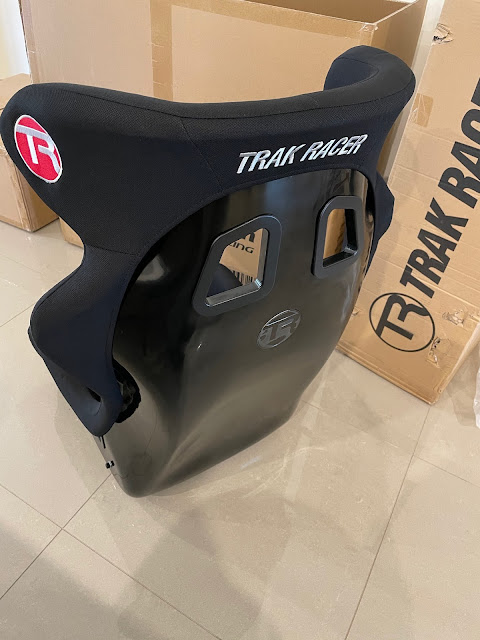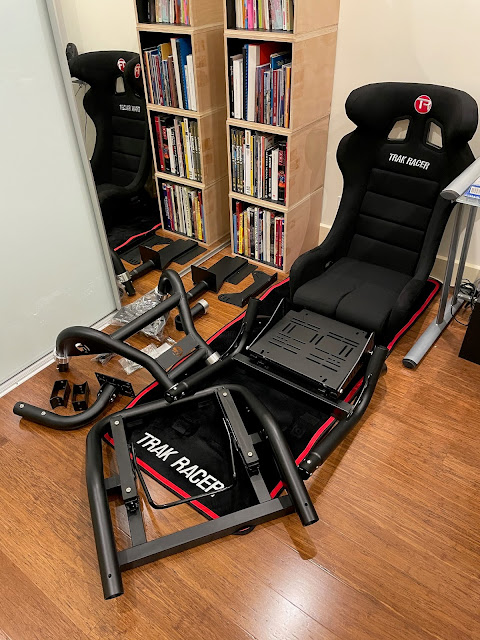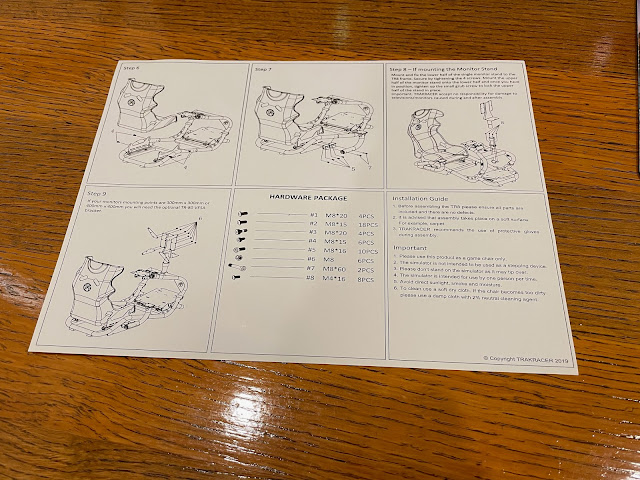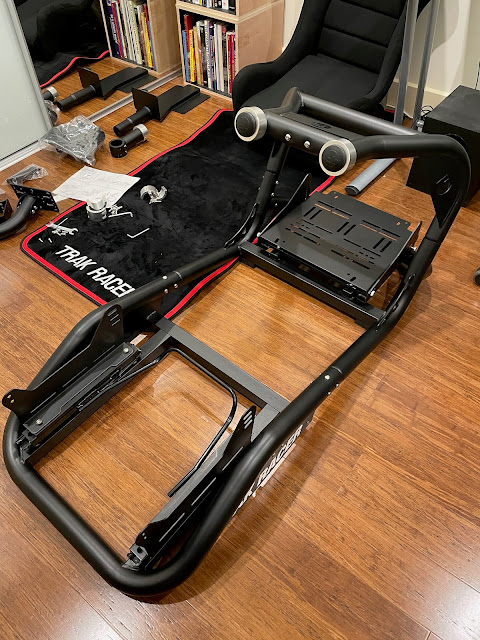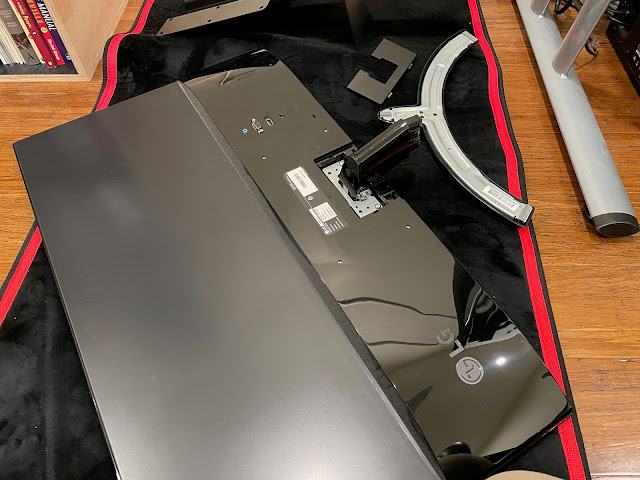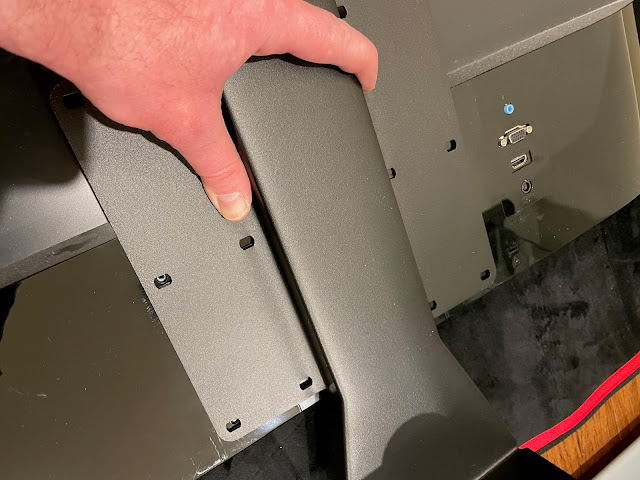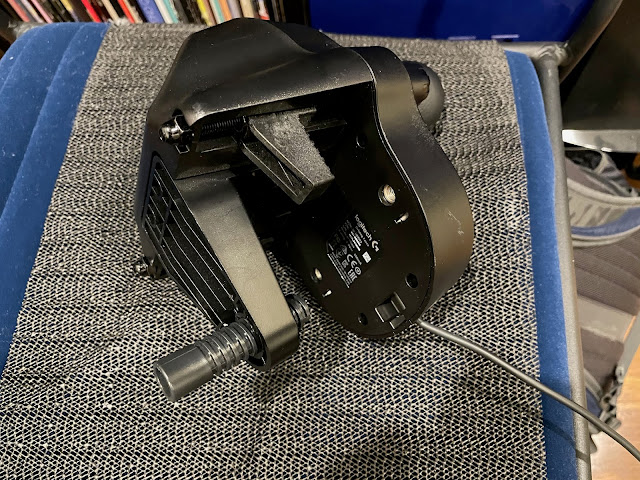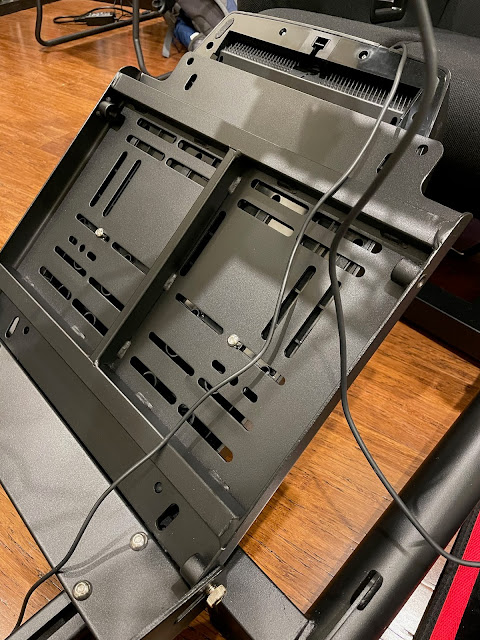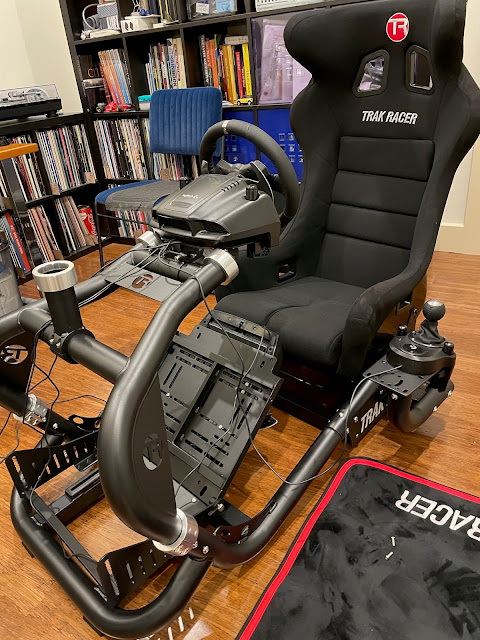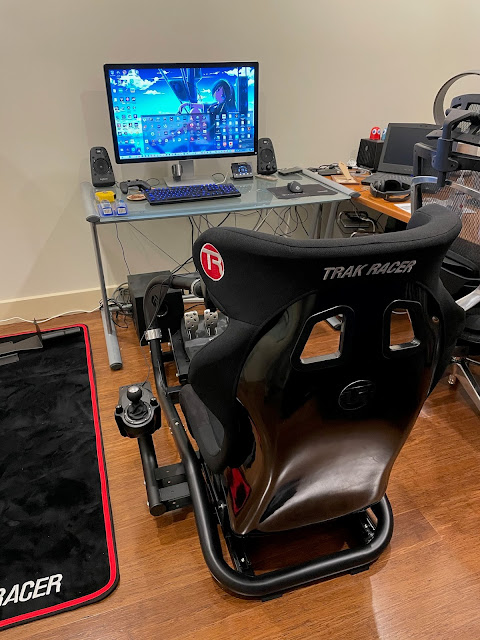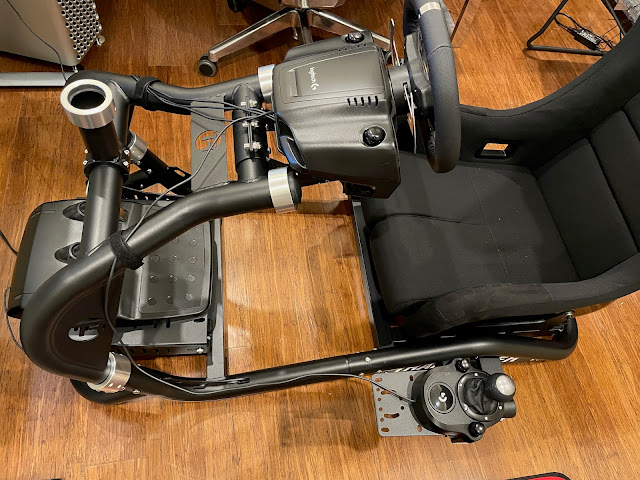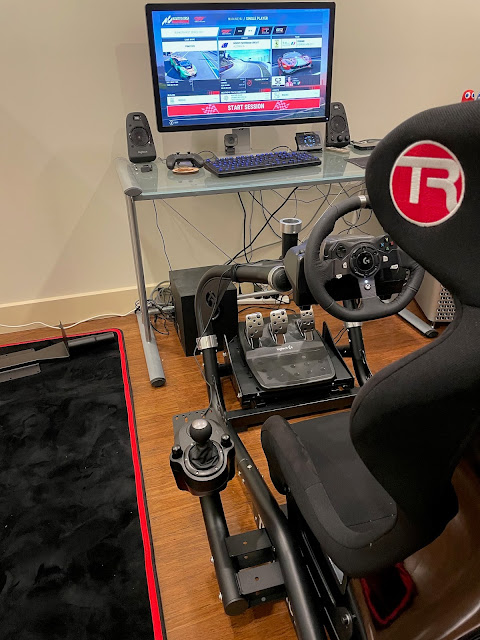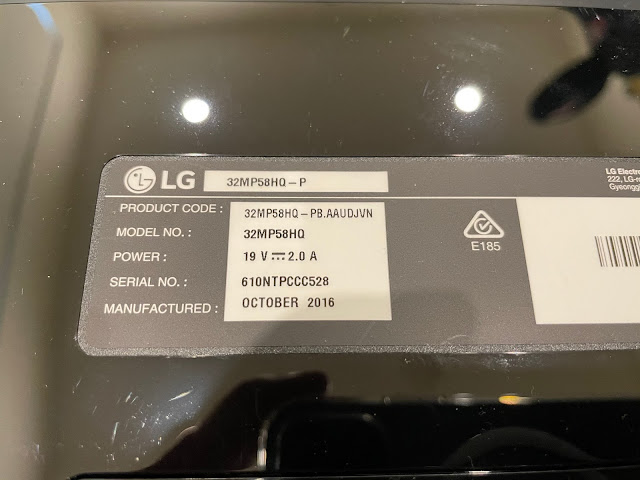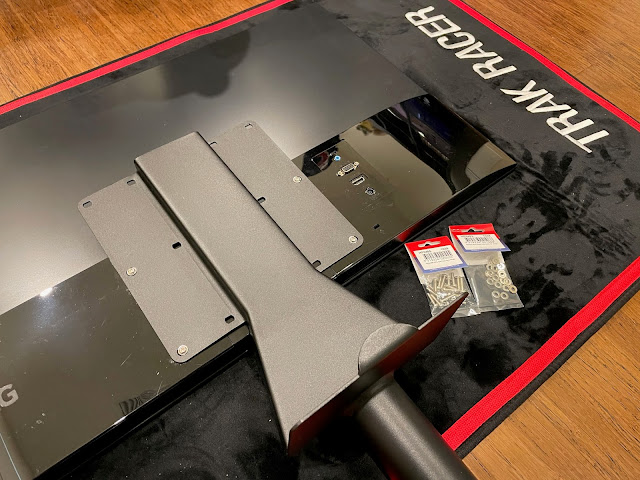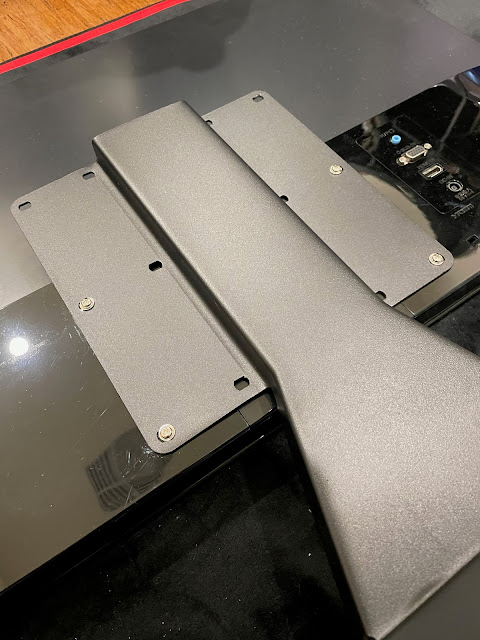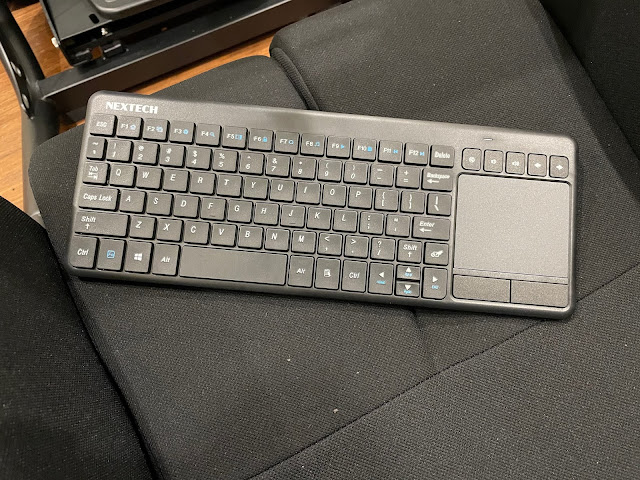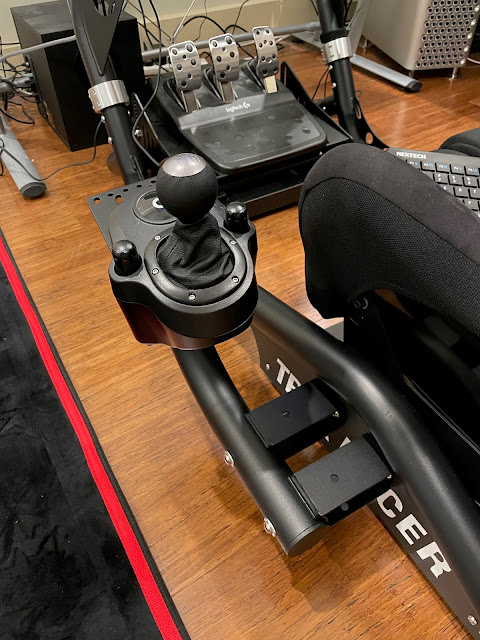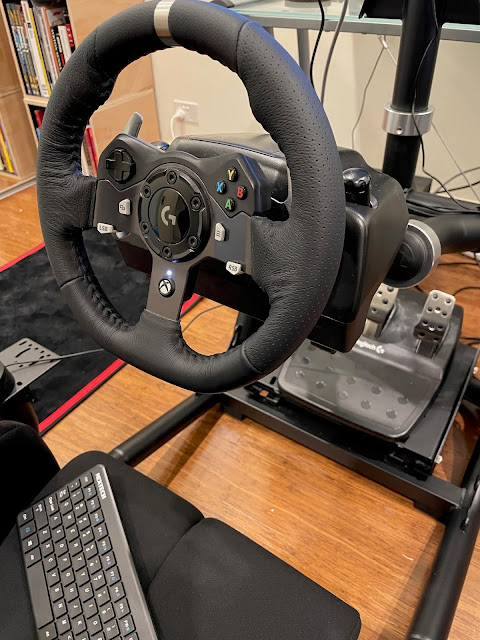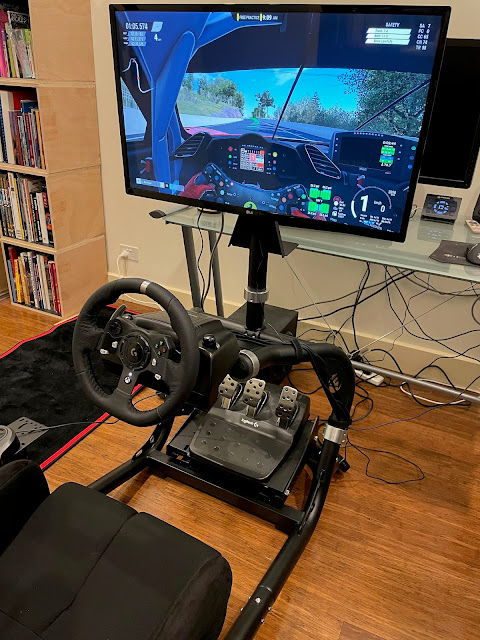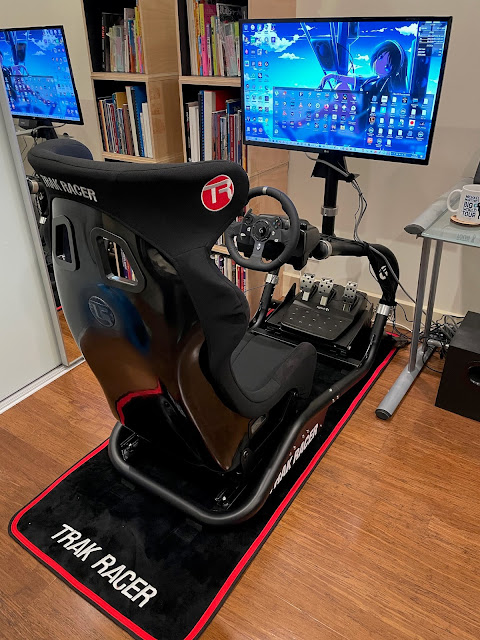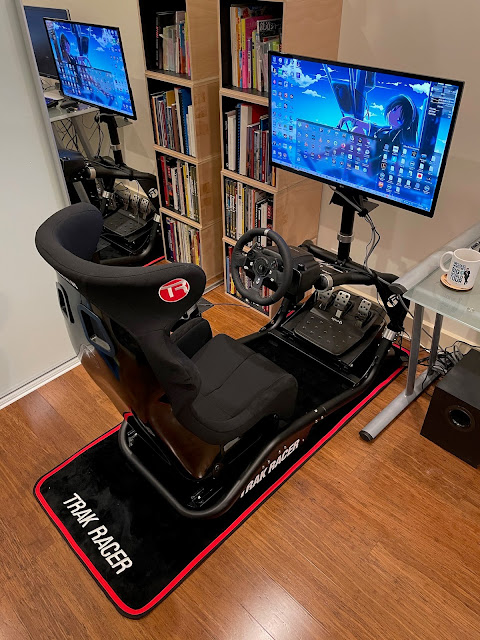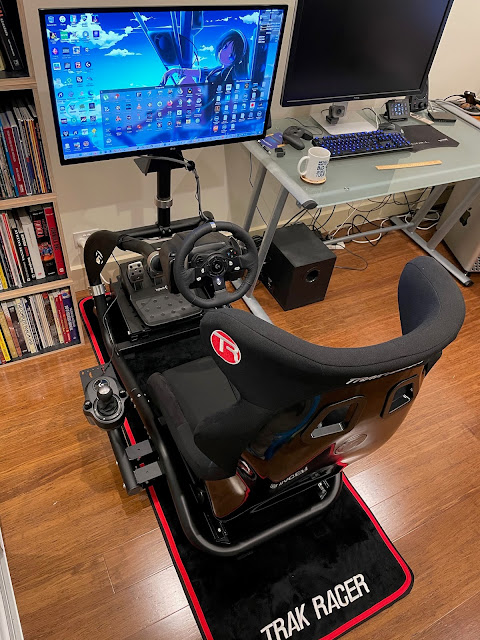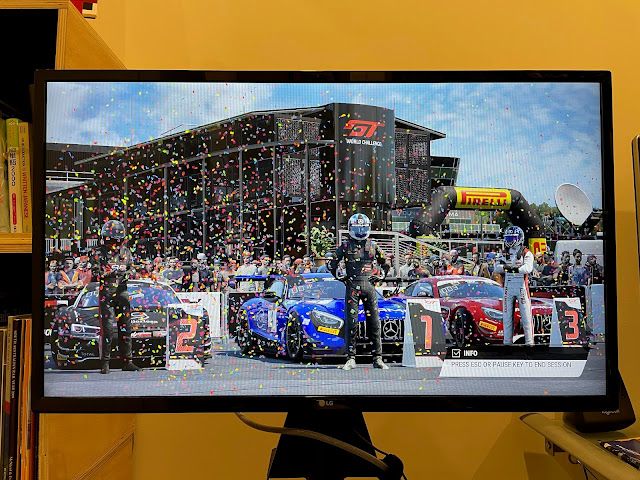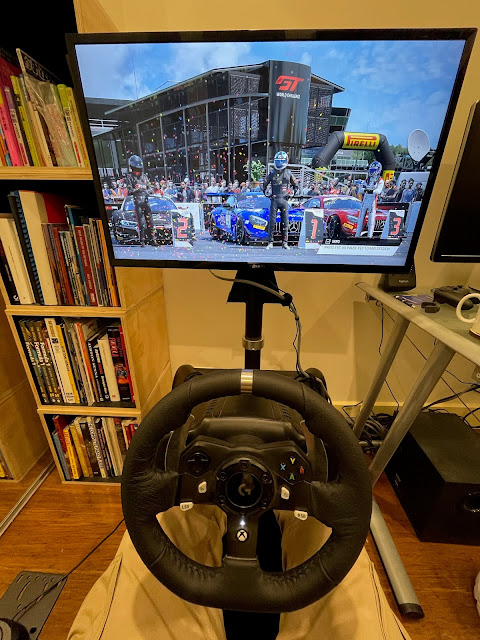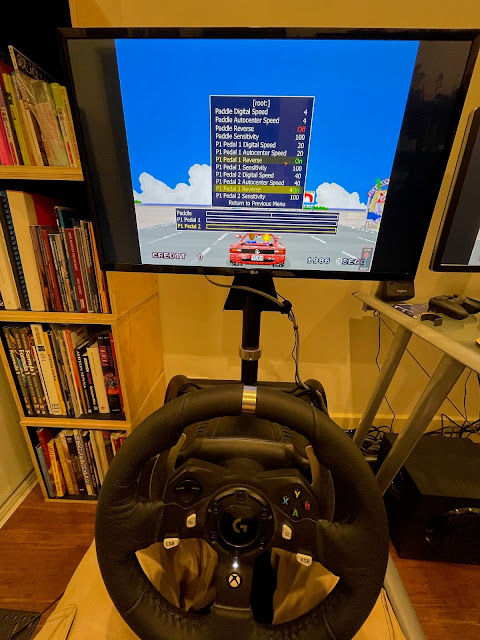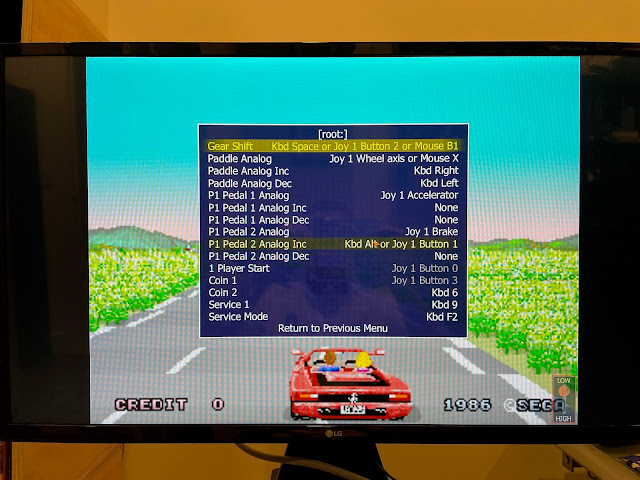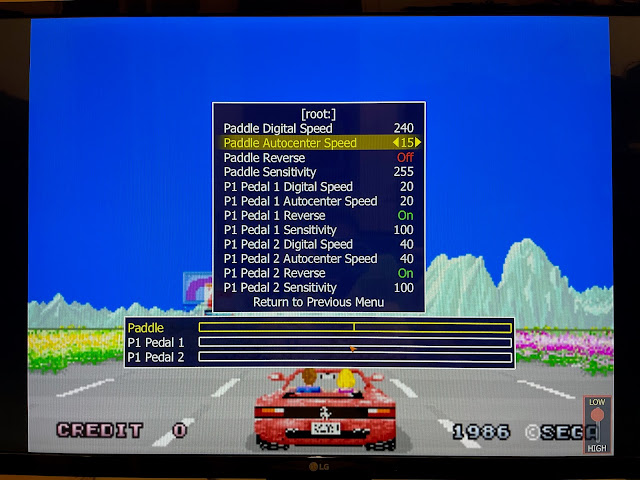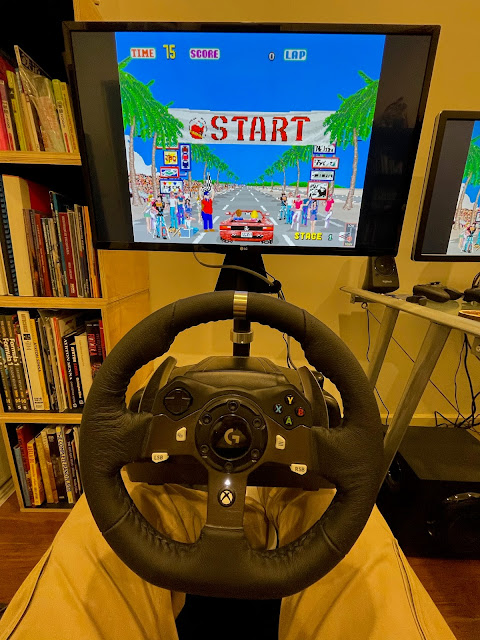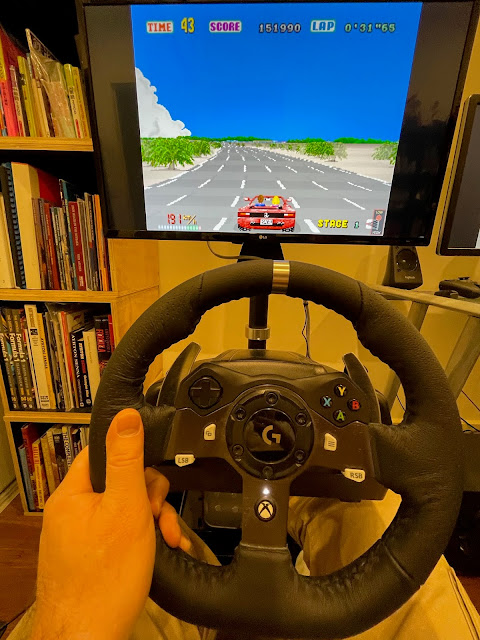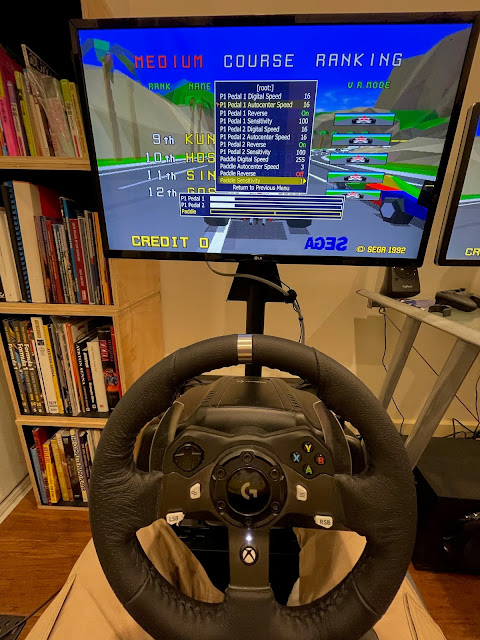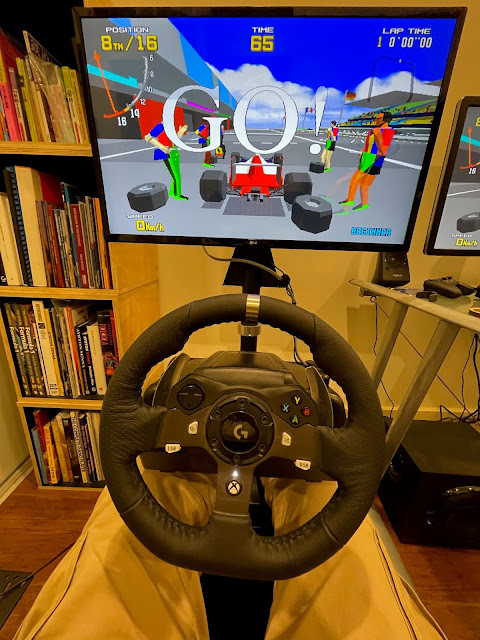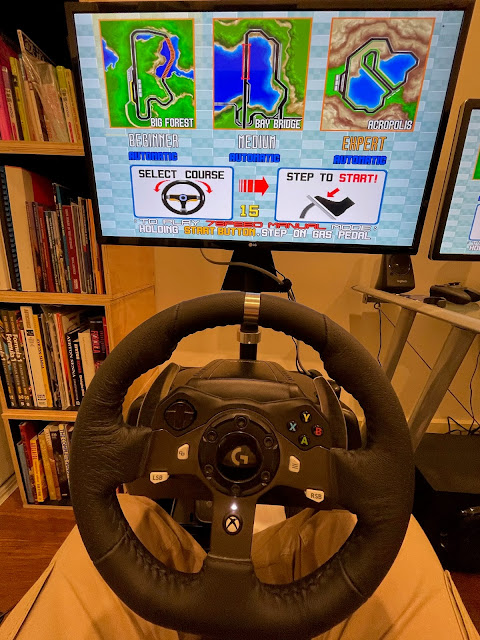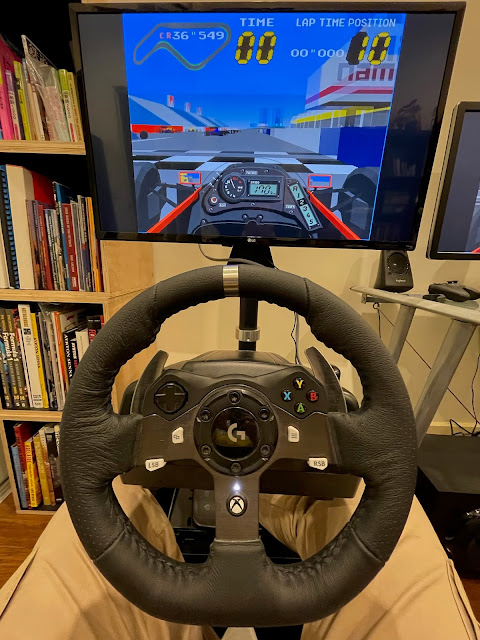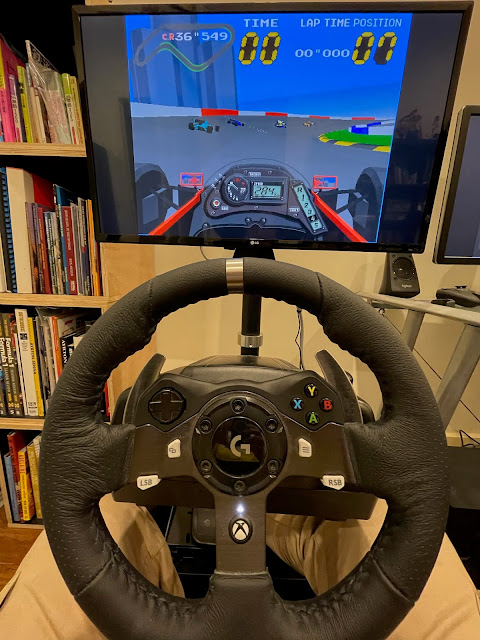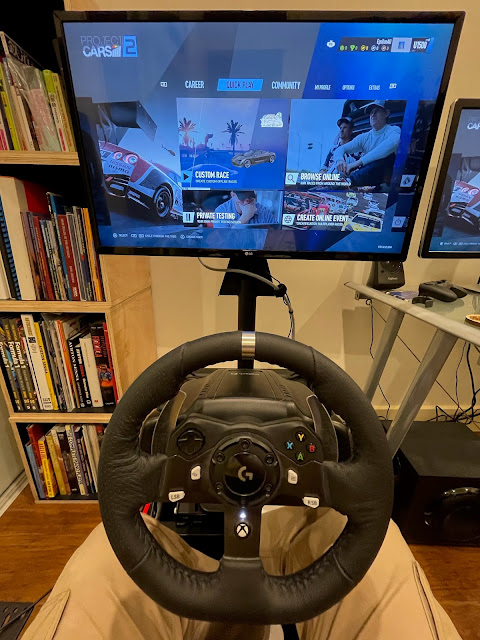Trak Racer TR8 is here!
This weekend has been busy building and setting up my new Trak Racer TR-8 racing simulator. For this blog entry I wanted to take a look at the build process and trying it out with a few different games, even running Outrun with MAME using it. Let's dive in :-)
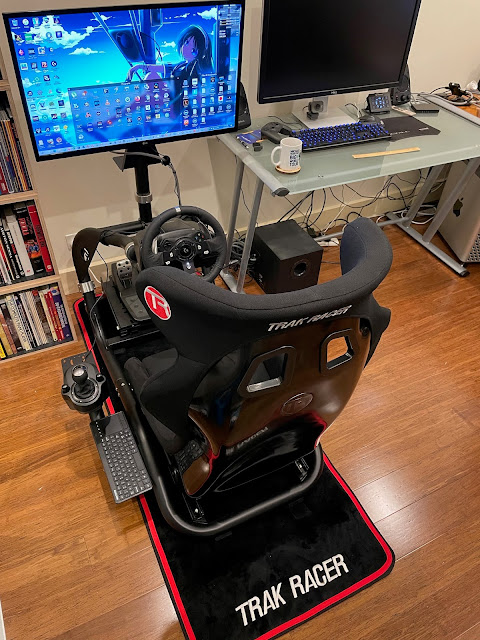
The HDMI 4K switcher is needed to take the inputs from the various systems, to then output to the Elgato HD60+ which is connected to my Mac using USB3, and passes through the HDMI signal to my screen.
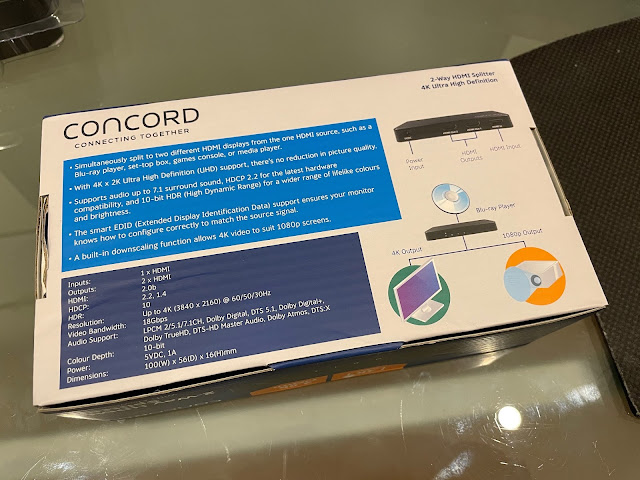
The guy in the shop told me that it is important that the 4K screen is plugged into the 1st HDMI output port, as apparently the onboard logic detects the first ports HDMI resolution as what it should be set to for both ports automatically. So unless you want 1080p on both ports, put the 4K screen in Port 1, the 1080p in Port 2!
For those observant folk, this HDMI switch box is not the one I bought earlier. I already had one. The problem is that I only get 5 input ports. Once I connect the PC, Switch, Xbox, PS4, ESXi servers and Raspberry Pi 4, it is all full. I can't connect any more devices without another HDMI switch box which is cascaded on one of the input ports. I haven't hooked that up yet, but I will do so I can connect my AmigaOne X1000 and Surface go to this setup too. I can then use the remote control on the new HDMI switch box to control which device feeds into the other HDMI switch box.
I had to move my record player and records to make room for the simulator. I also needed to swap around my Mac and PC (they used to be the other way around) to make the connections to the TR8 easy and not needing long expensive cables to make it all work.
I then removed all the other bits and put them out in my room, disinfected all the parts since they came from China (never be too careful!), and now ready to start assembly.
Trak Racer optimistically reckons it takes 1 hour to install this. Trust me, it doesn't. It takes a lot longer because you need to make sure everything fits your size and how you want the pedals to be aligned, the seat, the gearbox holder, and so on.
I pulled apart my 32" LG 1080p screen to remove the stand so I can attach it to the VESA mounting included with the TR8 simulator:
I realised that I didn't have the required screws to mount the screen to the frame. The TR8 didn't included any VESA mounting screws...I would need to go to the shop for that, so I decided to press on and come back to that later.
I then set to work mounting the Pedal set to the pedal mounting plate on the TR8. I only found two of the four holes lined up for where I wanted the pedals to be located, but this is more than enough to secure it to the plate and it definitely doesn't move.
One lesson I learnt though. I tried to be clever by unscrewing one end of the pedal plate and pushing back towards the seat to make it easier to locate the screw holes for the pedals. But once attached I couldn't push it back as the extra height of the Logitech pedals didn't clear the bar to push it back into position. So I had to unscrew the other end screws and reposition it and put the screws back in. Not a problem, but lesson learned!
So above you can see the VESA mounting bracket holder is installed, the wheel, pedals and gearbox holder on the correct side for people who drive on the left side of the road (like we do in Australia).
It is a fiddly business as everyone likes a different position, and it takes a bit of playing around to get it exactly how you like it. Fortunately the TR8 is very flexible in the positions of everything. The seat has three different height in front, two at the rear, and has a horizontal seat adjust like on a normal car with a bar located under the seat to pull and adjust as needed.
I played with the wheel position a bit before I was happy with it. Initially was a bit too high but I got it sorted in the end:
With that done, I turned my attention back to the LG screen. I looked up the LG model information but it didn't really say what VESA screws it needs. There are multiple types so this was frustrating...
I tried a few screws I had lying around until I found one that felt it fitted in the holes correctly. I then checked the VESa specifications which said a M4 screw should work for screens a little smaller than this one. For screen over 31 inches, it should be a M6 or M8 screw. But those were clearly too thick to fit in the LG screen.

With that done I could finally put the screen onto the TR8 - it swivels on the connection point freely, so it is easy to adjust:
Next I setup the wireless keyboard. As you can see it is quite small and light, exactly how I wanted it.
I was wondering where to store it where I could easily get it during play. I know Trak Racer sell a optional keyboard/mouse arm for the TR8, but I didn't like the two level mount with the mouse on top, and the extra space needed for the arm.

Here is a close up of the Logitech 920 steering wheel mounted on the TR8:
With everything now working with the PC and the TR8 setup, it was time to move it to the final position in the room, on the mat I bought with it that fits it perfectly. It is a heavy setup and definitely doesn't move while gaming (once in position). It can be moved by one person with some effort lifting it!
I wanted to maximise the space to walk around it to the cupboard so I pushed it forward a bit on the mat and it looks fantastic:

Nice to start TR8 gaming with a win! I found that for PC games I needed to make sure the VSync option is set, otherwise I was getting an out of sync error with my LG screen setup. The Elgato HD60+ was outputting ok to the Mac, as was the 4K dell screen for the pass through HDMI. Just the LG 1080p HDMI screen was doing this.
I also needed to adjust the Analog pedal inc and dec settings (using TAB key in game) to use the left/right cursor keys on the wheel gamepad.
Last but not least, I needed to adjust the Paddle settings (Wheel axis) to be much more sensitive and faster so that the turning is usable under the emulation.
Tricky playing the game and trying to take a photo with an iPhone at the same time. Try it sometime :-)
I then switched to Virtua Racing, another favourite arcade game of mine. Note that you need to be selective with which games you use the wheel, as many games don't work well with it.
Virtua Racing is a lot of fun. I enjoy playing the almost perfect arcade conversion on the Nintendo Switch, but playing the original arcade version with the TR8 and a proper wheel and pedals is just like playing in the original arcade cabinet (minus the actuated cockpit effects I admit).
At this point I had both the 4K screen and 1080p screens on, and found that the splitter outputs to both simultaneously. You can turn off the other screen at any time without affecting things.
Last but not least, I played another old 3D polygon racing arcade favourite of mine, called Winning Run:
Again, I had to set all the customisations for the settings for the game to use the wheel correctly. It works, but the steering is a bit tough at times. I need to play with the settings a bit more I think.
I also briefly played Projects Cars 2, this time on my Xbox One, which ran fine but had some annoying force feedback effects I needed to play with the settings to minimise as it was a bit too much.
In conclusion, the TR8 is a great rig, very comfortable and feels like the real thing. I am glad to have it to enjoy racing whenever I like, with very little to do to start racing. I expect to be live streaming from it soon so keep an eye out on my live streams at Twitch or Facebook live!


